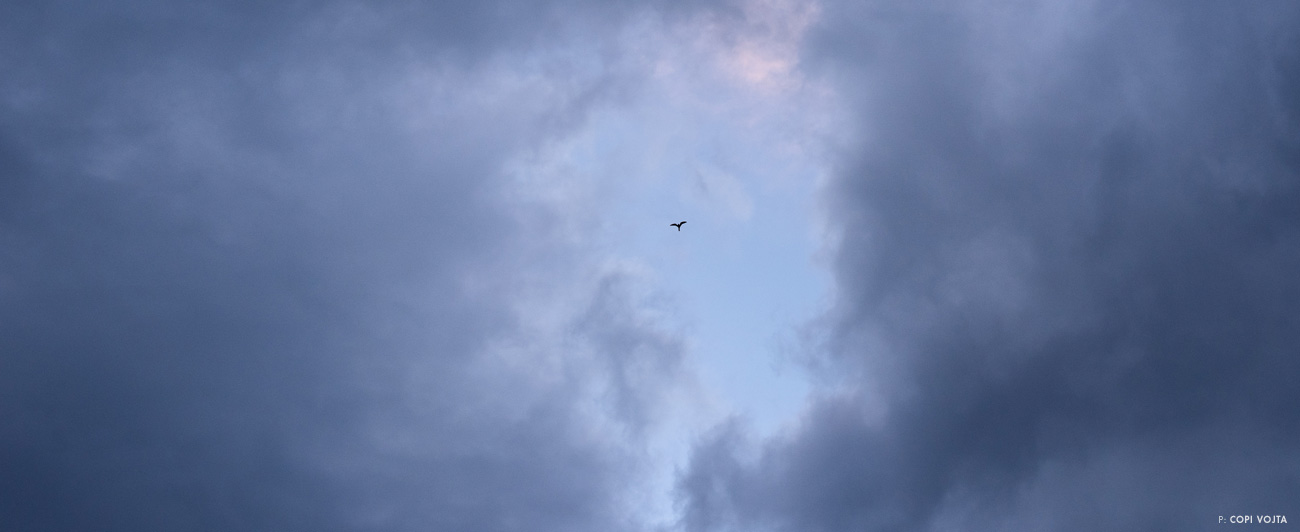Open Water
NIGHTHAWKS
I fish 17 days of the late-spring hatchery Chinook season just a short drive from my Bellingham, WA home. Mostly alone, I walk looking for things—things for my camera, for my fly. Inspect side channels, logjams, bushwhack the long way back to the truck. River mostly high, milky glacial silt, then warm snowmelt brown.
I build a throne to watch the water, a pile of rocks with a big flat one to sit on. Build three beer circles in the river; the water level determines which one is in use.
There is a nearby root ball I’ll pee on at least three times per visit.
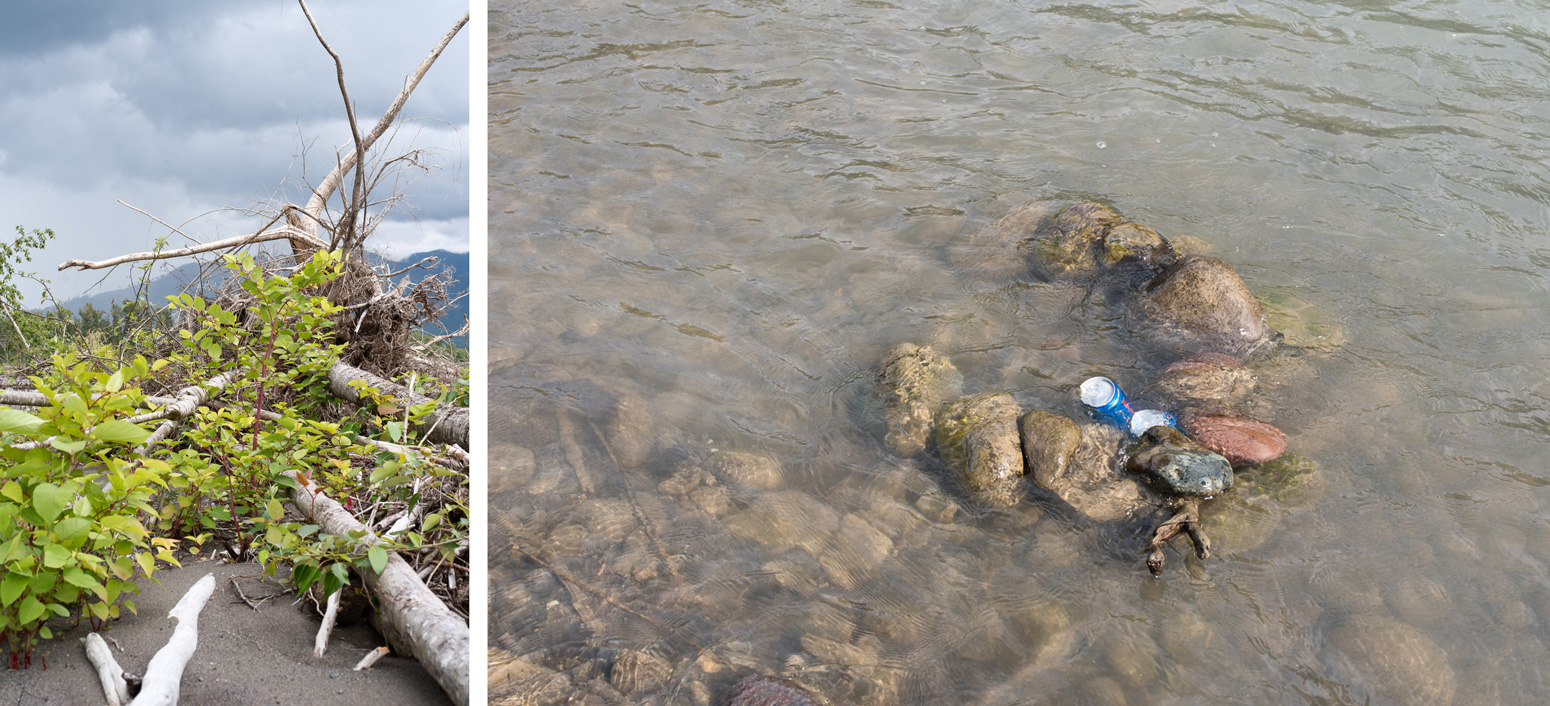
left to right
A meandering river channel, like many in the Pacific Northwest, can change each year with high water events. New logjams form, banks are further eroded and side channels become the main channel or run dry. Tracking the changes from year to year is a challenge—a favorite run last fall may be completely different come spring.
Name a better place to keep beer cold. There isn’t one.
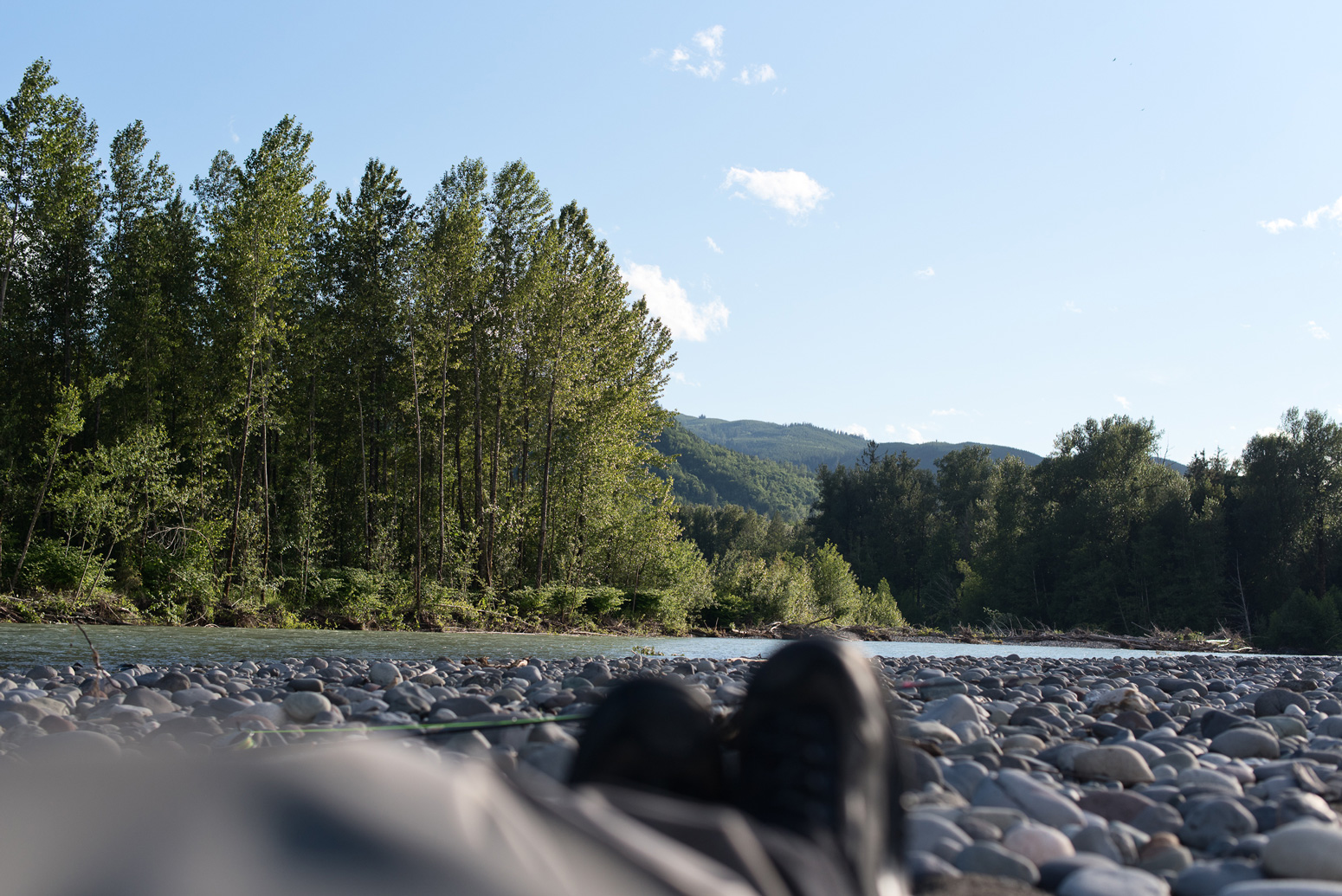
above Swing a run, take a break, swing it again. Repeat as necessary—or until last light.
This is the run. I’ve found it. I’ll fish it through three times in the early part of the day. Break for corn dogs and beer, and back for evening shifts. Warm days I wash my face, cool water on my neck. Nap comfortably on round rocks. Squeeze yarrow buds underneath my nose. The crepuscular hour waltzes in but yarrow cologne does not work on these fish. What does?
Char come sporadically, but I feel they are just participation trophies on chartreuse, even if trophy sized. Thankful for the pull, for the life they provide to line and rod—but I want Chinook.
One sunny day I’m low-holed by a quarantine-renovated wooden drift boat. They’ve caught one. Their optimistic words: “There’s fish moving.” A shot of confidence I desperately need.
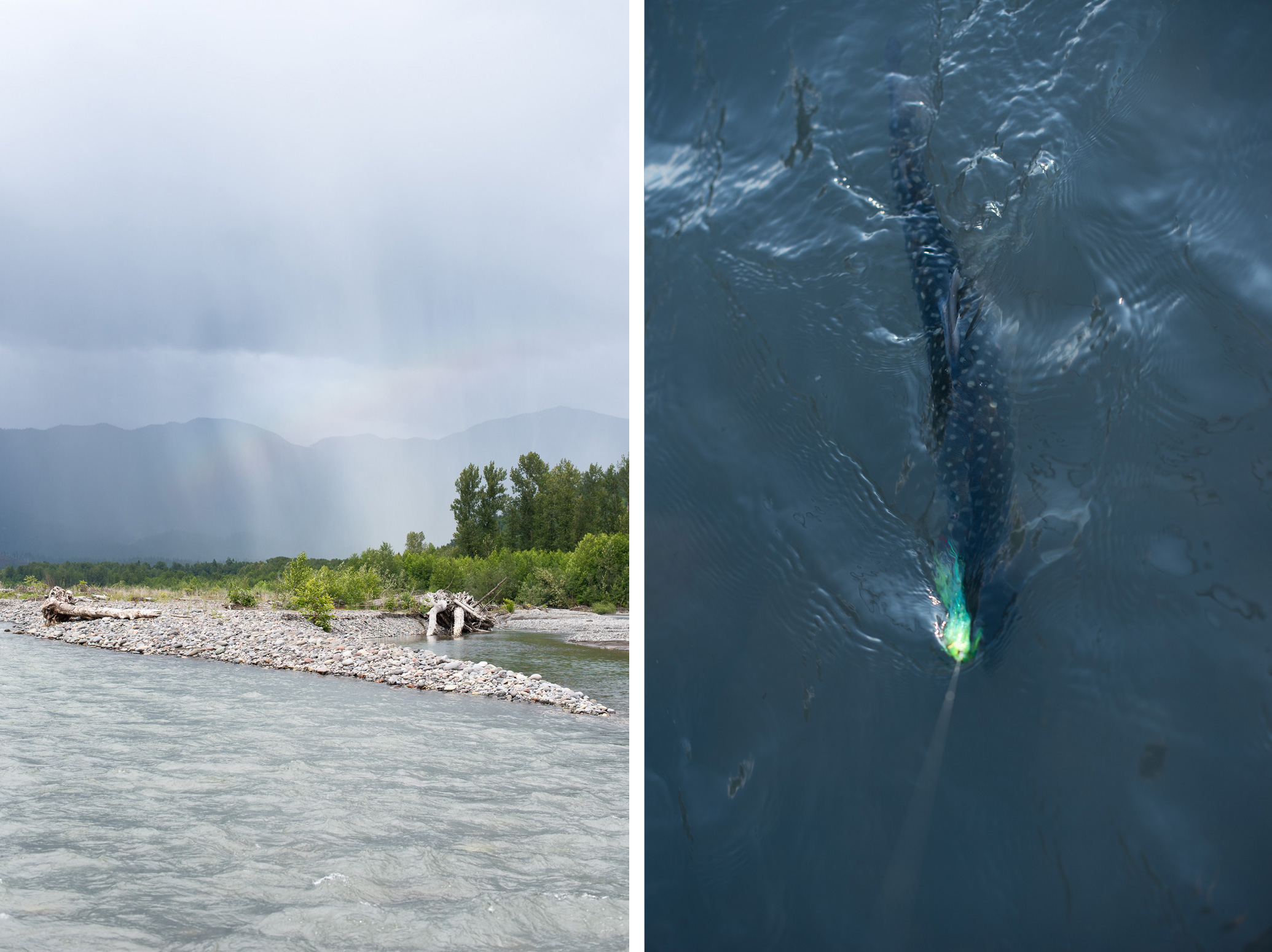
left to right
An ever-so-faint rainbow moves through the river valley with spring showers. Soon after, the skies opened and I was forced to take cover in nearby trees. The shelter barely helped to keep me dry—it was a soaker.
While illegal to target in many Washington state rivers, these aggressive char are caught often while swinging flies for salmon and steelhead.
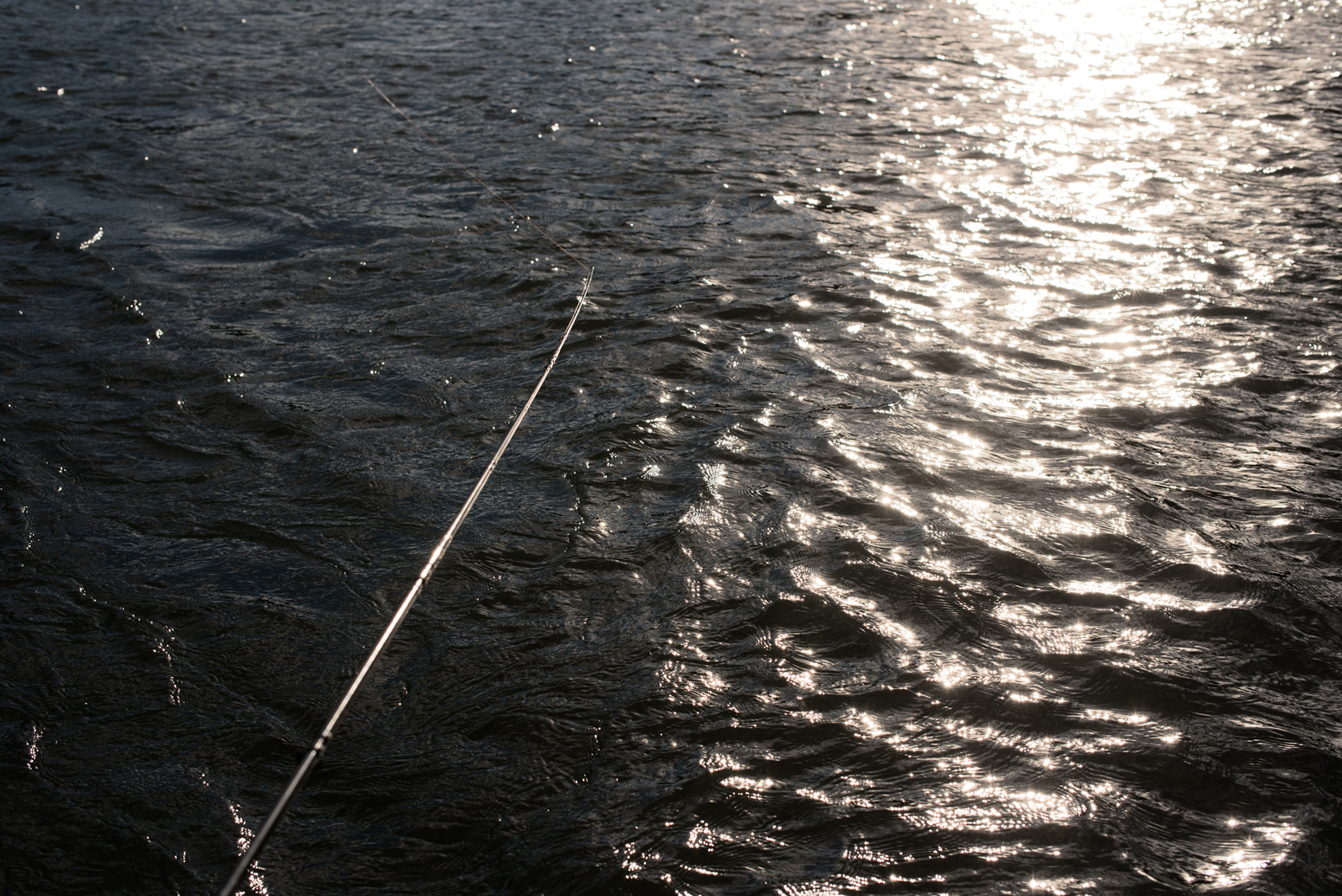
above An evening in a favorite swing run is a nice place to watch the light change as the sun disappears beyond the horizon.
This is the run. Nobody else fishes it. It’s traveling water, one-in-a-million chance. I should fish elsewhere. I stay, fishing it well, staying as positive as I can. I bleed one night. A knuckle knocked a busy outgoing reel handle. Hottest, biggest, brightest anadromous fish of my life seen from a distance but burned white hot into memory. A shot of confidence I desperately need.
A friend joins. If it weren’t for this friend, I wouldn’t be here tonight, river left and unprepared. Heavy rain and wet clouds with more coming—I thought the river would blow. Nighthawks thrive before dark; one bumps my line swooping dinner in the cool night air, inches from the surface.
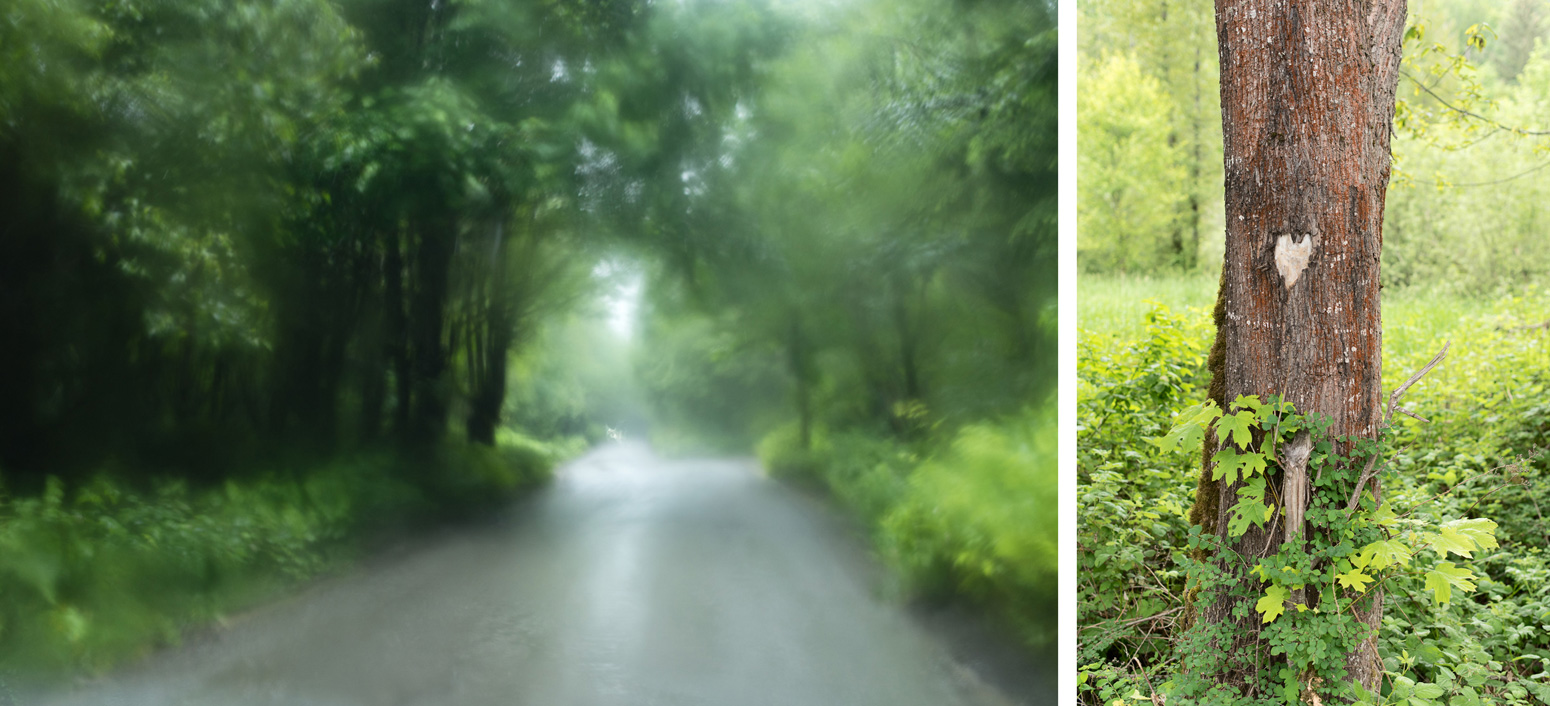
left to right
A fun game to play on rainy dirt roads is to see how long you can go without using your windshield wipers. The distortion can make for interesting effects when making pictures, as well.
A heart marks the spot where you can walk 15 minutes on a winding trail to the river and hook the brightest fish you’ve ever seen.
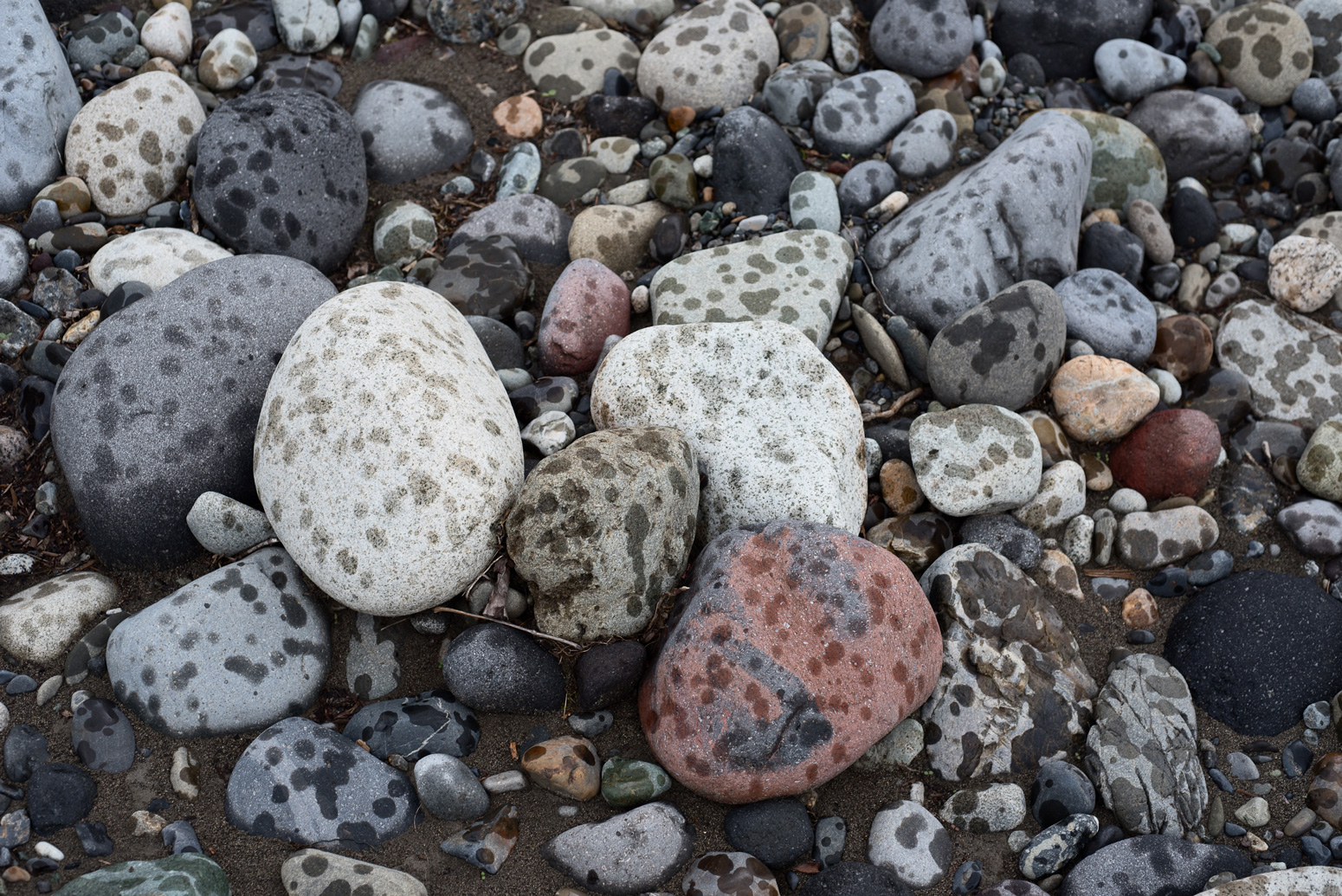
above The polka dotted patterns on a cobble river bar caused by the start of a light rain.
A fish hit and run, tippet breaks after three jumps. Friend gets destroyed too. I see their fish jump in the soft water river right, hundreds of yards downstream. There is nothing we can do but laugh at ourselves and the moment and learn from it.
Driving home the smells of freshly cut hay, woodsmoke and laundry waft in the window. Open, 55 mph air on my face. Dark shades still on, a cloudy sunset. Hat low, one hand on the wheel. In the tape deck, Fred Eaglesmith. Cold leftover coffee for the road, unlit cigarette hanging from my lips. A shot of confidence I desperately need.
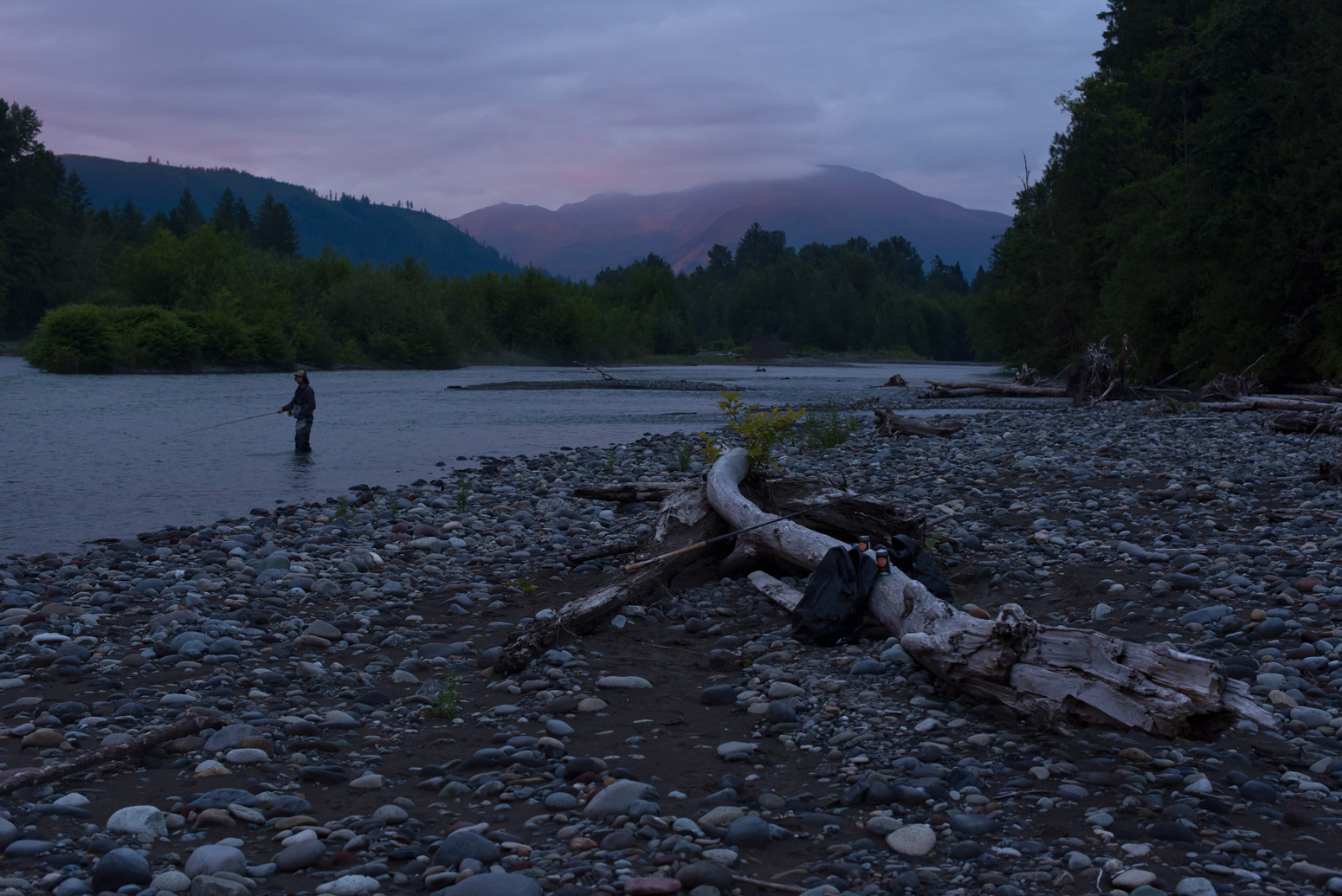
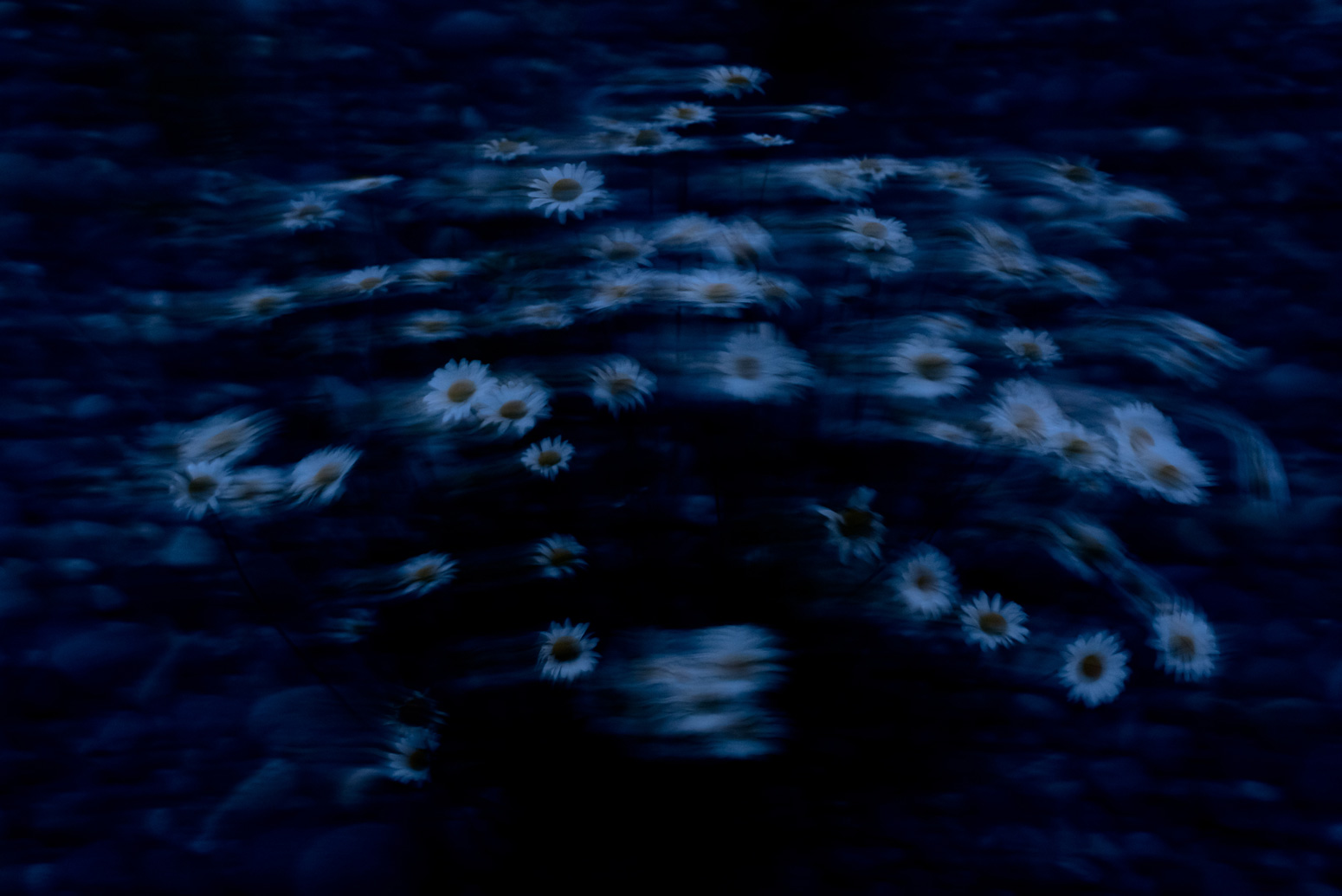
top to bottom
Liam Gallagher swings a run at dusk, hoping for a vicious grab from an aggressive Chinook salmon.
Oxeye Daisies were plentiful during the hatchery Chinook season; their bright white petals acted as guides during low light walks back to the truck.
